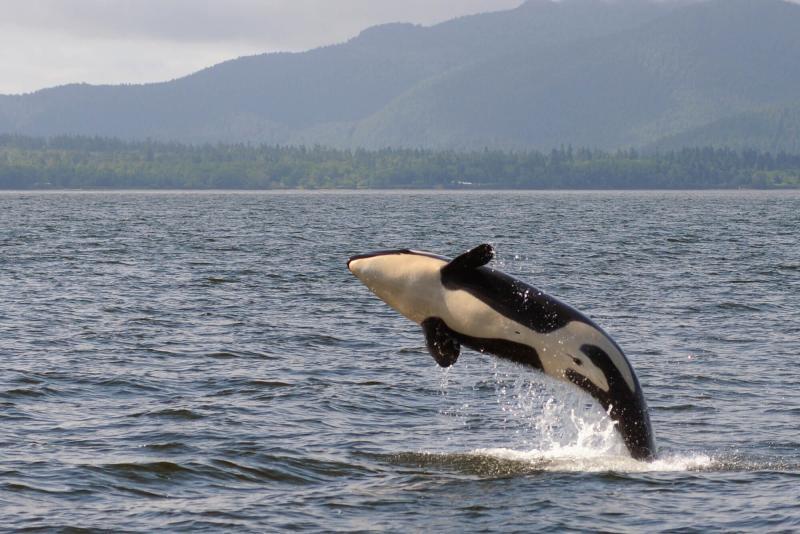
Southern residents work harder for prey, but catch fewer fish, new research finds
by NOAA Fisheries 11 Mar 2023 17:38 UTC

Southern residents work harder for prey, but catch fewer fish, new research finds © NOAA Fisheries
Resident killer whales such as the Southern Residents set themselves apart from other killer whales by behavior more than appearance. They prey on salmon rather than marine mammals, travel and forage in larger groups, and follow the leadership of older females in family groups known as matrilines.
New research now shows that they also differ from the closest other population of resident killer whales, Northern Residents that mainly reside in Canadian waters off British Columbia. The differences may reflect their different environments, the threats they face, and their strategies for survival.
These differences may also help discern why the Northern Residents are increasing in number while the Southern Residents are not. The findings demonstrate that an imperiled species may require different recovery strategies tailored to their circumstances, researchers said.
"There are many examples in conservation biology of how failure to account for a population's basic biology or behavior has led to recovery programs that have failed to achieve their objectives," said Dr. Jennifer Tennessen, a former NOAA Fisheries postdoctoral researcher now at the University of Washington. She is lead author of the new research, coauthored by several NOAA Fisheries scientists and published this week in Behavioral Ecology.
Different populations have different prey strategies
For instance, the scientists found that female Northern Resident killer whales catch more prey than males. They first meet their own energy demands, after which they share prey with their older, independent offspring, particularly their adult sons. That improves the odds that those sons will reproduce and spread their lineage. In contrast, male Southern Residents catch more prey than females, which may reflect female Southern Residents conserving precious energy or guarding their calves more closely.
The scientists never observed female Southern Residents with calves pursuing prey, while several Northern Resident females with calves did so.
"When we account for effort, Southern Resident males and females catch fewer prey per hour than Northern Residents, yet Southern Resident males, in particular, are spending a greater proportion of their time trying," Tennessen said.
So why do the Southern Residents have a harder time catching prey?
They may face reduced access or availability of prey, which could reflect the abundance of salmon (or lack thereof). It could also reflect other factors, such as noise, that could limit their ability to find the salmon. Another possibility is that the Southern Residents may forage more at night to avoid disturbance by vessels or other factors. The study gathered data from suction-cup tags only during the day. Scientists are reviewing data from tags placed on whales overnight to test this hypothesis.
"We may be seeing an indication of a struggling population trying to figure out how to feed itself under notably greater environmental stressors," Tennessen said. "Reducing disturbance may be key to recovering female foraging opportunities and, by extension, achieving greater reproductive rates in the future."
NOAA Fisheries research biologist Marla Holt said the Southern Residents might be under enough pressure to find food that they do not have the luxury to share with other whales. The research also found that male Southern Resident killer whales catch more prey when their mothers remain alive, opposite the pattern in Northern Residents. That does not appear related to reproduction since the mothers of the Southern Resident adult males in this study were older and past their calf-bearing years.
The new findings may help explain why the Northern Residents have been increasing in number while the Southern Residents are declining, said Joe Gaydos, Science Director at The SeaDoc Society, which helps track the health of the whales. The research indicates there may be a behavioral reason for the difference that may help explain why the Southern Residents lose many of their calves.
While pregnancy requires a lot of energy on the part of female killer whales, nursing puts them under greater demand, which could put their calves at greater risk, Gaydos said. He also noted that it underscores the importance of reducing disturbance of female Southern Residents, such as from nearby vessels.